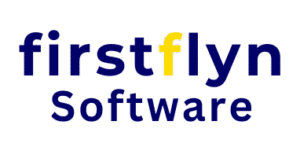In today’s data-driven world, the ability to transform raw data into actionable insights is crucial for making informed decisions. Organizations across various industries rely on effective data analysis techniques to guide their strategic choices and improve overall performance. This comprehensive guide explores the most effective techniques for report analysis, ensuring you can leverage data to drive better business outcomes.
Understanding Data Analysis
Data analysis involves systematically applying statistical and logical techniques to describe, summarize, and compare data. The ultimate goal is to uncover trends, patterns, and relationships within the data, which can then be used to make data-driven decisions. By harnessing the power of data analysis, businesses can gain deeper insights into their operations and market conditions, leading to more informed decision-making.
Key Techniques for Effective Report Analysis
1. Descriptive Analysis
Descriptive analysis is the foundation of data analysis. It involves summarizing historical data to identify patterns and trends. Techniques such as mean, median, mode, and standard deviation are commonly used in descriptive analysis. By understanding the basic characteristics of your data, you can create a clear picture of past performance and trends.
Example: Analyzing sales data from the previous quarter to understand which products performed best can help in making inventory decisions.
2. Diagnostic Analysis
Diagnostic analysis goes a step further by investigating why certain trends or patterns occurred. This technique involves exploring the causes behind the data and understanding the factors that influenced outcomes. Techniques such as correlation analysis, regression analysis, and root cause analysis are integral to this process.
Example: If sales dropped in a specific region, diagnostic analysis can help identify whether it was due to seasonal factors, marketing issues, or other external influences.
3. Predictive Analysis
Predictive analysis uses historical data to forecast future trends and outcomes. By applying statistical models and machine learning algorithms, businesses can predict future events and trends with a higher degree of accuracy. Techniques such as time series analysis, linear regression, and classification algorithms are commonly used in predictive analysis.
Example: Predicting future sales based on past data to optimize inventory levels and marketing strategies.
4. Prescriptive Analysis
Prescriptive analysis goes beyond predicting future outcomes by recommending specific actions to achieve desired results. This technique uses optimization and simulation models to suggest the best course of action. Techniques such as decision trees, optimization algorithms, and scenario analysis are used to guide decision-making.
Example: Recommending the optimal marketing strategy based on predicted sales and customer behavior to maximize ROI.
5. Data Visualization
Data visualization involves presenting data in graphical formats such as charts, graphs, and dashboards. Effective data visualization helps in understanding complex data sets quickly and intuitively. Tools such as Tableau, Power BI, and Google Data Studio are widely used for creating interactive and informative visualizations.
Example: Using interactive dashboards to visualize sales performance across different regions, enabling quick identification of trends and anomalies.
6. Text Analysis
Text analysis, or text mining, involves analyzing unstructured textual data to extract meaningful information. Techniques such as sentiment analysis, topic modeling, and keyword extraction are used to analyze customer feedback, social media posts, and other text data.
Example: Analyzing customer reviews to identify common themes and sentiments, helping to improve product quality and customer satisfaction.
7. Machine Learning and AI
Machine learning and artificial intelligence (AI) enhance data analysis by automating complex tasks and uncovering hidden patterns. Techniques such as clustering, neural networks, and ensemble methods can be used to analyze large data sets and generate actionable insights.
Example: Using machine learning algorithms to segment customers based on purchasing behavior, enabling personalized marketing strategies.
Best Practices for Report Analysis
1. Define Clear Objectives
Before starting your analysis, define clear objectives and questions that you want to answer. This will help in selecting the appropriate techniques and ensuring that your analysis remains focused and relevant.
2. Ensure Data Quality
High-quality data is essential for accurate analysis. Ensure that your data is clean, complete, and reliable. Implement data validation and cleaning processes to maintain data integrity.
3. Use Appropriate Tools
Choose the right tools and software for your analysis needs. Tools such as Excel, R, Python, and specialized analytics platforms can enhance your ability to analyze and visualize data effectively.
4. Interpret Results Contextually
Contextualize your findings within the broader business environment. Consider external factors and industry trends when interpreting results to ensure that your conclusions are relevant and actionable.
5. Communicate Insights Effectively
Present your findings clearly and concisely to stakeholders. Use visualizations and executive summaries to communicate key insights and recommendations effectively.
Conclusion
Effective report analysis is a crucial component of data-driven decision-making. By employing a range of techniques—ranging from descriptive and diagnostic to predictive and prescriptive analysis—businesses can turn data into actionable insights. Leveraging tools and best practices ensures that your analysis is accurate, relevant, and impactful.
